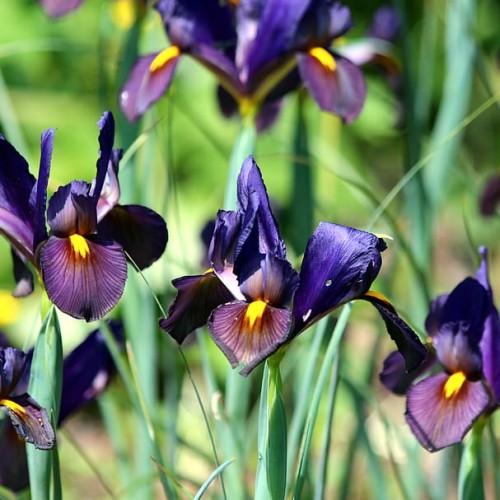
standard dwarf bearded iris
Iris 'Eye Of The Tiger'
Cycle:
Herbaceous Perennial
Watering:
Average
Hardiness Zone:
3 - 8
Flowers:
Flowers
Sun:
Full sun,part shade
Leaf:
Yes
Growth Rate:
Low
Maintenance:
Moderate
Drought Tolerant:
Yes
Care Level:
Moderate
watering
This type of iris should be watered moderately and regularly. During the growth and flowering period (late March to mid- June) water the plants 1-2 times a week, making sure that the soil stays moist but not soggy. During hot, dry periods, water more often. Reduce watering during the summer rest period and begin again when new leaves start to grow in late August. During fall, water 1-2 times a week until the leaves are completely gone. In very cold winter climates avoid watering altogether.
sunlight
Standard dwarf bearded iris (Iris 'Eye of the Tiger') should receive full sun for at least 6 to 8 hours per day. It thrives best when planted in an area that receives morning sun and afternoon shade, as the intense afternoon sun can cause the plant to become scorched. If planted in an area that receives too much sun, it is recommended to provide midday shade or keep the soil evenly moist. In general, the more sun the Iris 'Eye of the Tiger' receives, the better it will grow and bloom.
pruning
Standard dwarf bearded irises (Iris 'Eye Of The Tiger') should be pruned once a year, in late summer or early fall. Prune away any old, dead foliage and divide large clumps, if needed. Cut back any stems that are too tall or too wide and trim away any dead flowers. As a general rule of thumb, prune the stems back by about ⅔ of their height. In addition, remove any foliage that is damaged or diseased. This will help promote good air circulation and prevent the spread of disease. Pruning in late summer or early fall can also help to stimulate new growth and increase blooming come spring.
